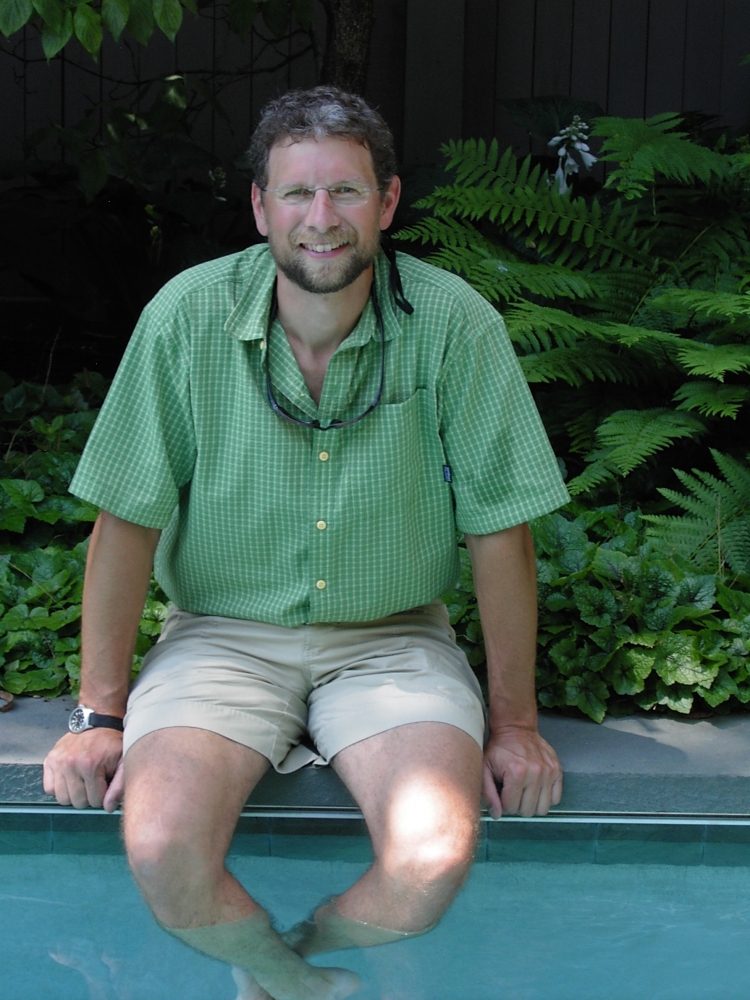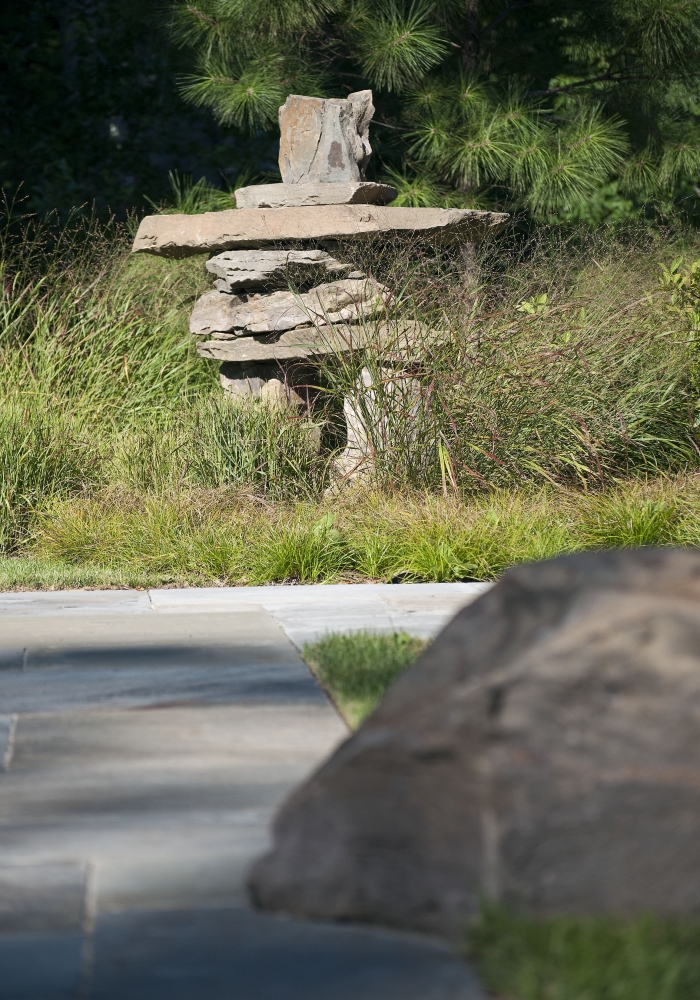ELLEN’S COFFEE SHOP, Chestertown, MD. The smell of sizzling bacon welcomes me as I dash through the door on this chilly morning. I’m on time, as always (a chronic condition I suffer from) and look, there’s D. Miles Barnard sitting in the back booth working on some papers. He’s already ordered coffee. Oh, it’s a delight when a breakfast interview arrives early!

Miles Barnard
A landscape architect, Barnard has the clear eyes and healthy complexion of a guy who spends a lot of time outdoors. And, judging the from the hearty breakfast he orders, an appetite to match. Grinning, Barnard watches the waitress cover our tabletop with plates of eggs, sausage, french toast, O.J. etc. With forks in hand we settle in to chat about, well, plants, I suppose.
Because isn’t that’s what landscape architects are about? Trees, plants, mulch, gravel, perennial gardens, and stuff like that?
Shows what I know.
“Some projects are just plantings, but the best projects are everything,” says Barnard. “Everything an architect does on the inside of a house, we do on the outside.”
He explains this patiently, as though he’s encountered plenty of people who share my limited perspective of what constitutes landscape architecture.
“I lean toward enjoying the architecture part as much as anything else,” he says.
He cites examples: swimming pool design, spa, pool house, garden gates, paving design, pergola, lighting, water features, outdoor shower.
“Outdoor shower?” I pause to dream a little dream.
He smiles knowingly. “Everybody loves an outdoor shower.”
“Wouldn’t you think there would be more of them?”
“There are probably more than you know!”
“I’d die to have one.”
“Okay,” he says, “that’s my mission, for every project to have an outdoor shower.”
Barnard says he particularly loves designing garden gates because they set the tone for what’s going to happen behind it. “It suggests something interesting is happening beyond the gate.”
Which, he explains, could be a pool, pool house or any number of wonderful delights.
“But wait, wouldn’t the pool house be the architect’s job,” I ask.
“Once it’s detached, it’s mine,” he says, with obvious glee.
So that’s how it works… .
“Do architects tend to treat landscape architects as less thans?” I wonder.
“Always! Of course!”
 Well, landscape architects have credentials, too. See here: (cribbed from his website) D. Miles Bernard, ASLA, RLA founded South Fork Studio Landscape Architecture in 2003. A graduate of The University of Maryland, he’s a registered landscape architect in Maryland and Virginia. His ideal project incorporates the principles of sustainability (water conservation and reuse), ecological restoration (reduction of impervious surfaces) and the use of native plant material. He is a member of the American Society of Landscape Architects, the Maryland Native Plant Society and The International Society of Arboriculture.
Well, landscape architects have credentials, too. See here: (cribbed from his website) D. Miles Bernard, ASLA, RLA founded South Fork Studio Landscape Architecture in 2003. A graduate of The University of Maryland, he’s a registered landscape architect in Maryland and Virginia. His ideal project incorporates the principles of sustainability (water conservation and reuse), ecological restoration (reduction of impervious surfaces) and the use of native plant material. He is a member of the American Society of Landscape Architects, the Maryland Native Plant Society and The International Society of Arboriculture.
Barnard grew up in New Hampshire. As a kid he was always drawing, and he dreamed of being an architect. But over time the dream faded. Fast forward to college, a year at Hobart, which he describes as “a really, good, fun year.”
Apparently, it was the kind of year that’s so much fun that you have to take the next year off. Searching through the database at Hobart for internships, he found Echo Hill School listed, and that’s how he found himself working on the eastern shore. It was 1991, and the year he met his future wife, Lex Fry, who was a director at the school. It was love at first sight. He credits Fry with his current success.
“I probably would not be a landscape architect if not for Lex whipping me to go back to school. You know, it’s really hard to go back when you’re out.”
The couple has a house in Telluride, Colorado. They are skiers, but they rent the house for most of the winter. Instead, they go every summer for two or three weeks for the yoga festival. (Fry is an accomplished yoga teacher, and Barnard is also extremely adept.)
He says he came here to appreciate and enjoy the natural resources. “I thought I was interested in horticulture. That’s what I planned to major in at University of MD. Then I heard people talking about this landscape architecture thing. The pang to do architecture came back. I thought horticulture + architecture = landscape architecture. It seemed like a pretty good combination.”
He’s been practicing for 11 years now.
“People ask me, what’s your style? Some landscape architects do have a recognizable style. You can tell they did this or that. But I don’t really have a style. Every client is different and every project is different. I focus on creating functional space. If it doesn’t function well for the client, then what’s the point?”
Barnard says one of the most rewarding parts of his job is collaborating with the contractor. “I enjoy my job the most once construction starts. If I could have my way, I’d have a little office on site and just live there for the duration of the job. Because things come up, and changes have to be made. I like working out the problems along the way.”
The waitress clears our table. Barnard has brought a spiral bound presentation booklet to show me of a recent project. It’s 20+ pages of construction drawings, sketches and photographs, including garden gates, pool house, winding pathways, and more. And, I notice (a bit wiser than when breakfast began) only three pages are about plantings.
To see examples of Barnard’s award-winning work — residential, commercial, insitutional and pro bono — visit his website at, https://www.southforkstudio.com



Matt Fletcher says
Barnard is a total rock star. In an ASLA kinda way.